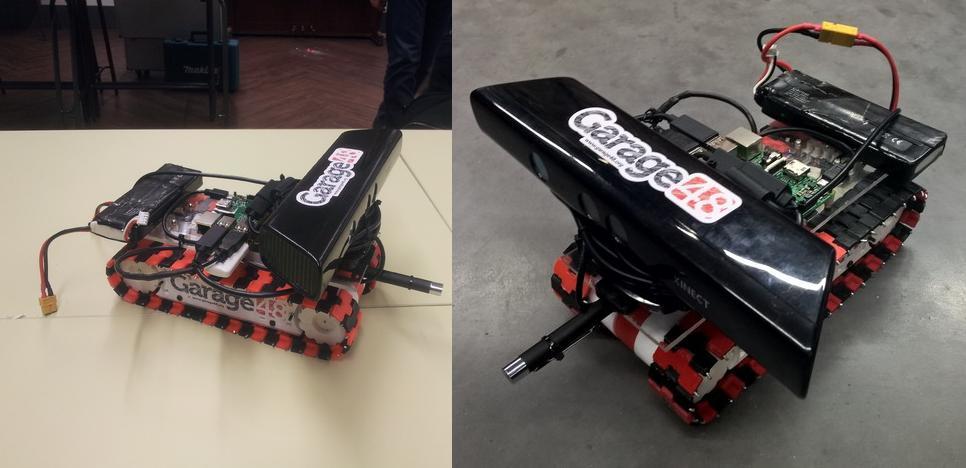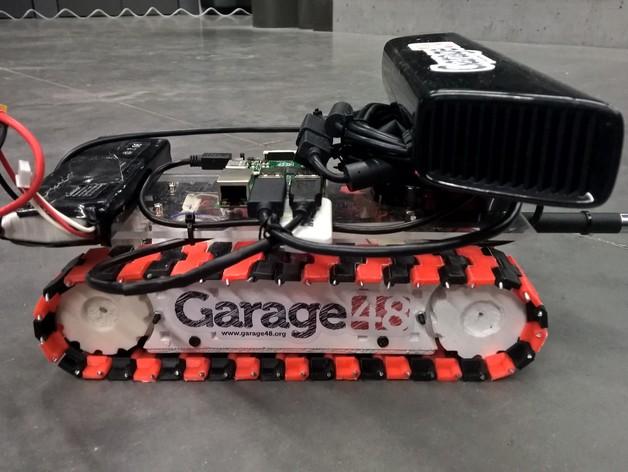 It’s really amazing to see all of the unique ways people have been utilizing 3D printing in their lives. We are finally beginning to see trends emerge within the desktop 3D printing space, and these trends are pointing in a direction of convergence between 3D printing and robotics. Thanks in a big way to a credit card-sized computer known as the Raspberry Pi, and the increasing affordability of desktop 3D printers, virtually anyone can create their own robotic devices.
It’s really amazing to see all of the unique ways people have been utilizing 3D printing in their lives. We are finally beginning to see trends emerge within the desktop 3D printing space, and these trends are pointing in a direction of convergence between 3D printing and robotics. Thanks in a big way to a credit card-sized computer known as the Raspberry Pi, and the increasing affordability of desktop 3D printers, virtually anyone can create their own robotic devices.
For one man, named Madis Kaasik, and his “hacking” team, 3D printing was a way in which a robot called the Pi Tank was born.
“It was 4 am and one of the few hardware hackathons in the world, called Garage48 was about to start in 12 hours. [Our team leader], Kristjan looked at what we had to use for the event, ‘3D printing by Mass Portal,'” Kaasik tells 3DPrint.com.
 On hand at the event were mentors from Raspberry Pi, and they had with them the new Raspberry Pi 2. Sponsoring the event was Microsoft and the Estonian Defense Academy, so the team of hackers were challenged with coming up with something unique. They came up with a 3D printable Raspberry Pi open source tank robot that utilized a Microsoft Kinect sensor, and it would be named ‘Pi Tank’.
On hand at the event were mentors from Raspberry Pi, and they had with them the new Raspberry Pi 2. Sponsoring the event was Microsoft and the Estonian Defense Academy, so the team of hackers were challenged with coming up with something unique. They came up with a 3D printable Raspberry Pi open source tank robot that utilized a Microsoft Kinect sensor, and it would be named ‘Pi Tank’.
Members of the team really liked the way the Parrot Drone app functioned, allowing users to see a camera feed of their drone right on their smartphone or tablet, while having two joysticks to steer. They decided that Pi Tank would feature similar controls, allowing for users to easily see what the robot is ‘seeing’ at any given time.
Working with just 48 hours of time, Kaasik and team had to come up with an idea and then fabricate it. Using other open source designs as motivation allowed them to complete their mission in the allotted time frame.
“We discovered sources for some 3D printed designs from Drogerdy — Tank Bot, and one part from Henkka,” Kaasik tells us. “We had to modify the designs a lot so that we could fit in the engines we had at the moment and so that the tank could support the Kinect on top of it.”
 After the design was complete, it was off to 3D printing the robot, using a Mass Portal Pharaoh Ed 3D printer, which was provided to all participants of the Garage48 event.
After the design was complete, it was off to 3D printing the robot, using a Mass Portal Pharaoh Ed 3D printer, which was provided to all participants of the Garage48 event.
“Their machines are made of metal materials, not from some cheap plastic and they are one of the best in the world at that price range,” said Kaasik. “Sturdy and extremely fast.”
Once assembled it was time to test out the functionality of the Pi Tank, and it met all of the designers’ goals. The Microsoft Kinect is utilized in order to enable what they call ‘Live Drive View,’ allowing users to see exactly what the robot sees on the convenience of their smartphone. The Kinect also allows for 3D scanning of objects. The robot itself features 4 geared motors, a Raspberry Pi 2, a WiFi dongle, an Arduino Uno, a 12 volt to USB board, an S3 2200 LiPo battery, and an L298n motor driver board.
The Pi Tank is a multi-purpose robot, capable of doing many different things depending on the preferences of its creators.
“It is for people who want a cheap robot that can move, and one you can 3D print new parts for [based on] your agenda,” Kaasik tells us. “So you don’t need to spend 3 weeks to build a moving rig or robot. It already exists. We have made it so you can develop it further and use it in your projects. You don’t need to think of how to get it moving, how to wire the motors and so one — it all has been done. Maybe you want a robot to play with your dog but you are not an engineer — so you can use the platform.”
 Besides the ability to use the Kinect, which Kaasik believes provides for ample opportunities for developement, he also tells us that sensors could be added to it quite easily. The goal of the Pi Tank was to create a robot that could basically do whatever you want, and it appears as though they have succeeded.
Besides the ability to use the Kinect, which Kaasik believes provides for ample opportunities for developement, he also tells us that sensors could be added to it quite easily. The goal of the Pi Tank was to create a robot that could basically do whatever you want, and it appears as though they have succeeded.
The developers behind Pi Tank include Ilya Kuzovkin (programmer and app developer), Ulf Anso (programmer, electronics and mechanical engineer), Kristjan Järvan (team lead, marketing), and Madis Kaasik (mechanical engineering, design, CAD, and 3D printing).
If you are interested in downloading and 3D printing your own Pi Tank, you can download the code on Github, the instructions on Kaasik’s website, and the 3D printable files on Thingiverse. What do you think about the Pi Tank? Will you be 3D printing it yourself? What types of features would you like see added? Discuss in the Pi Tank forum thread on 3DPB.com.
Subscribe to Our Email Newsletter
Stay up-to-date on all the latest news from the 3D printing industry and receive information and offers from third party vendors.
You May Also Like
3D Printing Unpeeled: New Arkema Material for HP, Saddle and Macro MEMS
A new Arkema material for MJF is said to reduce costs per part by up to 25% and have an 85% reusability ratio. HP 3D HR PA 12 S has been...
3D Printing News Briefs, January 20, 2024: FDM, LPBF, Underwater 3D Printer, Racing, & More
We’re starting off with a process certification in today’s 3D Printing News Briefs, and then moving on to research about solute trapping, laser powder bed fusion, and then moving on...
3D Printing Webinar and Event Roundup: December 3, 2023
We’ve got plenty of events and webinars coming up for you this week! Quickparts is having a Manufacturing Roadshow, America Makes is holding a Member Town Hall, Stratafest makes two...
Intuitive Machines Debuts $40M Hub for Lunar Ambitions and 3D Printing Tech
Best known for its pioneering work in lunar exploration and its development of the Nova-C lunar lander, Intuitive Machines (Nasdaq: LUNR) has marked yet another significant milestone. The leading space...































